75 F. high temperature at St. Cloud Tuesday.
74 F. average high on June 2.
78 F. high on June 2, 2014.
June 2, 1945: Snow and sleet pile up to 4.5 inches at Tower. Source: MPX National Weather Service.
June 2, 1898: Heavy rain across Minnesota. Just over 7 inches at Pine River Dam.
Amish DopplerI
grew up in the Amish country of Lancaster, Pennsylvania and received a
meteorology degree from Penn State, eventually landing at KARE-11 in
1983. When I got here it was still WTCN, for Twin Cities News. Remember
John Bachman and Cora Ann Milhalik? And then they went and hired this
guy named Paul Magers.
I'll never forget my interview. Station
managers took me to the top of the IDS Tower for lunch (remember "The
Orion Room"?), then drove me past the "Mary Tyler Moore house" at Lake
of the Isles. Then they took me to see the Byerlys in St. Louis Park.
That sealed the deal. Any city with a grocery store this fancy must be
doing something right.
Oh, Amish Doppler? A window. Don't
underestimate the simple power of staring out a window. Pilots and
farmers can "read the sky" and make a fairly accurate short-range
forecast, using cloud type, wind direction and barometric pressure. You
have a crude Doppler in your vehicle. Those pops of static on AM radio
are lightning strikes. A solid wail of static could mean a line of
storms within 100 miles.
Long range guidance hints at a
building heat wave the latter half of June for the central and eastern
USA. We may be right on the edge of "stinking hot" but 80s return next
week. Comfortable 70s spill over into the weekend; the best chance of
T-storms comes today with locally heavy rain. We dry out a little by
late week but another swarm of showers and storms may kick up puddles
this weekend.
Monsoon Season.
This is GFS-predicted rainfall over the next week, courtesy of NOAA and
AerisWeather. Check out the 3-5" rainfall bulls-eye over Iowa, and two
plumes of tropical moisture arcing north. One is Hurricane Blanca
approaching Cabo San Lucas, Mexico (details below). The other is a wet
surge pushing from Jamaica toward Cuba and the Florida Keys. We'll keep
an eye on both.
Summer Really Arrives Next Week.
Meteorological summer kicked off on June 1, marking the beginning of
what is, historically at least, the warmest 90 days of the year. A
streak of 80s sets up next week with noticeable dew points (topping 60).
The brunt of the heat may stay south and east of Minnesota - we'll
probably be right on the edge of discomfort. In the meantime plan on a
few T-storms today, again over the weekend. Naturally.
Heat-Pump High.
A Sonoran ridge signature builds from the Desert Southwest into the
Plains and Midwest by mid-June; a potential for real heat from Phoenix
and Denver to Kansas City, Chicago and Atlanta by the third week of
June. Minnesota may be close enough to a cool frontal boundary for a few
rounds of showers and T-storms, keeping us a bit cooler. Map:
GrADS:COLA/IGES.
Record-Breaking May Rainfall in Texas and Oklahoma, By The Numbers.
The Capital Weather Gang includes some eye-popping statistics in their latest post; here's an excerpt: "...
The final rainfall totals and the records they broke were enormous.
A few exceptional records set across Texas include:
Statewide — Wettest month on record (8.81 inches)
Dallas-Forth Worth — Wettest May on record (16.96 inches)
Dallas Fort-Worth — Second wettest spring (March-May, 25.05 inches)
Wichita Falls — Wettest month on record (17 inches)
Childress — Wettest month on record (13.21 inches)
May
rainfall totals of 15 to 20 inches are widespread across
Texas. According to the office of the Texas state climatologist, the
month of May is now the wettest on record for Texas, having received an
average of 8.81 inches statewide..."
Was China's "Eastern Star" Passenger Ship Hit By a Tornado?
We still don't know with certainty, but there are reports the ill-fated
ship was hit by a "cyclone" or tornado. Here's an excerpt of a story at
WTHITV.com: "...
According
to CCTV reports, the ship capsized at approximately 9:28 p.m. Monday.
According to the ship’s captain and chief engineer, two of the 15
rescued, the ship was hit by a tornado. A senior official with the China
Meteorological Administration told the Beijing News that while it was
raining heavily at the time of the incident, he could not confirm a
tornado. According to Xinhua, witnesses said the Eastern Star sank so
fast it did not have time to send out a distress call, a rare occurrence
according to officials..."
Photo credit above: "
An
aerial view of the rescue site of the overturned passenger ship in the
Jianli section of the Yangtze River in central China's Hubei Province on
Tuesday, June 2, 2015. The ship, named Dongfangzhixing, or Eastern
Star, sank at around 9:28 p.m. (1328 GMT) on Monday after being caught
in a cyclone in the Jianli section of the Yangtze River." (Ye Haitao/Xinhua/Zuma Press/TNS).
* More details on the violent wind storm or tornado that sank the passenger ship "Eastern Star" from
The Capital Weather Gang.
U.S. Weather Experts: Yes, a Tornado Could Sink a Chinese Cruise Ship. Foreign Policy has a follow-up article that got my attention; here's an excerpt: "
Chinese
state media is backing up the captain’s story, claiming that a twister
with level 12 winds – the most severe — hit 18 minutes after detection,
leaving insufficient time for a proper warning on which a ship’s crew
could act. Yet the claim has struck many Chinese netizens as
far-fetched, and, alongside an online outpouring of dismay and sympathy
for the passengers’ families, has driven online debate since the
accident. “If tornadoes are a possibility, are predictions for tornadoes
not a possibility?” asked one user of Weibo, China’s largest public social media platform..."
Tracking Blanca.
Hurricane Storm Blanca is forecast to become a Category 3-4 hurricane
within 48-60 hours before passing over cooler water and weakening. It
could still strike Cabo San Lucas, Mexico as a Category 1 hurricane or
strong tropical storm within 120 hours. Details at
tropicaltidbits.com.
 Landfalling Hurricanes Since 1950.
Landfalling Hurricanes Since 1950. Here is an information-rich graphic, courtesy of
NDCD in Asheville, North Carolina.
10 Years Since Katrina: A Look Back At The Busiest Hurricane Season. 2005 was in a class by itself. NPR has a
good summary, and details on what made 2005 so volatile; here's an excerpt: "...
Rick
Knabb, director of the National Hurricane Center in Miami, says "2005,
no doubt about it, was off the charts, above average activity overall
and unusual." He says warm water in the Atlantic and low wind shear were
two of the factors that made it such an active season. "The conditions
were so ripe for such a large chunk of the hurricane season. You just
don't see that level of activity every year," he says. It was a season
that used up all the names designated for hurricanes and tropical
storms. For the first time, the National Hurricane Center had to resort
to naming storms with letters of the Greek alphabet..." (Image credit above: NOAA).
 Up All Night, Sleep All Day: That's How UAH Will Study Storms in National Project
Up All Night, Sleep All Day: That's How UAH Will Study Storms in National Project. Nighttime thunderstorms remain more of a mystery than daytime (instability) storms. Here's an excerpt of a story at
AL.com: "...
We
don't know a lot about thunderstorms at night, formation and
maintenance," Knupp said. "We know more about daytime systems because
what's going on on the surface represents that which is going on above
the surface. The surface is coupled with the boundary layer above it.
"At night, that's not true. You may have this network of surface
stations that don't tell you much about what's going on above the
surface where the important thunderstorm initiating mechanism are going
on or thunderstorm maintenance mechanisms are taking place..."
Flood Survivors Suffering From Post Traumatic Stress Disorder? I see similar symptoms in tornado and hurricane survivors.
Science Daily has the details.
After Water.
Longreads.com
has a long and spectacularly information-rich story about the deepening
drought in California; storytelling at its best. Here's an excerpt:
"...
This has in some ways made us very rich. California’s economy is
the largest of all the U.S. states. When the plains turned to dust
nearly 100 years ago, thousands migrated here, including my family, and
helped to establish the Central Valley as the nation’s preeminent
agricultural center. Today the region produces a full third of the
produce we eat. But now the land is purging. A spectacular drought has
drawn the entire Southwest dry. Where water has long been a rival good
yet inexplicably taken for granted, more than 90 percent of California
is in a severe drought, with the situation in Porterville and much of
the surrounding valley deemed exceptional..."
Aided By The Sea, Israel Overcomes An Old Foe: Drought. Californians should be vaguely encouraged for the long term. Here's a snippet of a fascinating story at
The New York Times: "...
As
California and other western areas of the United States grapple with an
extreme drought, a revolution has taken place here. A major national
effort to desalinate Mediterranean seawater and to recycle wastewater
has provided the country with enough water for all its needs, even
during severe droughts. More than 50 percent of the water for Israeli
households, agriculture and industry is now artificially produced..."
Photo credit above: "
Tourists,
swimming in a pool overlooking the Ramon Crater at hotel Beresheet, in
Mitzpe Ramon in the Negev desert in Israel, April 30, 2015. With its
part-Mediterranean, part-desert climate, Israel had suffered from water
shortages for decades, but a national effort to desalinate Mediterranean
seawater and to recycle wastewater has provided Israel with enough
water for all its needs." (Uriel Sinai/The New York Times).
FIFA And The Sports Crime of the Century?
Yes, this is a big deal. The term unprecedented is overused, right up
there with disruptive, but in this case the word seems to fit. Here's
the intro to a good summary from Grantland: "
It’s impossible to
overstate the historic nature of what happened last week in Zurich and
New York. It is unprecedented in the history of organized sports. What
is alleged is that an entire international sport was organized and
operated as a criminal conspiracy. This isn’t the Black Sox. This isn’t
tennis players throwing matches or basketball players shaving points.
This isn’t one owner fudging his taxes, or one team being connected to a
drug cartel. It is incorrect to refer to FIFA as being “fraught” with
corruption or “riddled” with crime. FIFA is itself a corrupt act. FIFA is itself the crime. This is a staggering revelation..."
Minneapolis Is Only U.S. City on Worldwide Bike-Friendly List.
The Star Tribune has the story; here's an excerpt: "...
The latest recognition is from the Copenhagenize Design Co., a Danish design firm that annually publishes a worldwide index of bike-friendly cities.
Minneapolis is No. 18 on the list, which is led by Copenhagen, Denmark,
and two Dutch cities: Amsterdam and Utrecht. The only other North
American city to make the top 20 is Montreal, Canada, at No. 20. Minneapolis
is the first U.S. city to make the list since the firm increased the
number of cities up for consideration in 2013. The list's authors said
Minneapolis is "quickly becoming the go-to city in America for building
(bike) infrastructure," noting that the effort has the backing of
officials in City Hall..."
Photo credit above: "Alexis
Pennie, Amy Brugh and Ethan Fawley ride on the Hiawatha Bike Trail in
Minneapolis in March. Hawley is the executive director of the
Minneapolis Bicycle Coalition, and Pennie and Brugh are volunteers." Leila Navidi / Star Tribune.
Why Facebook Is The Junk Food of Socializing. Proving once again that there is no substitute for face to face. Here's a clip from a story at
Nautilus: "...
Similarly,
when we interact with “friends” on social-networking sites or through
texting, it can feel like we’re getting quality social contact, but we
are not. It turns out that face-to-face interaction with other
people—real people, right in front of us, not characters on TV or
friends we communicate via text messages—is absolutely vital for
longevity and happiness. In fact, it is a larger contributor than
exercise or diet!...
"
TODAY: Scattered T-storms, some heavy. Winds: S 10-15. High: 74
WEDNESDAY NIGHT: A few lingering showers and T-showers. Low: 63
THURSDAY: Lukewarm sun, stray T-storm still possible. High: 79
FRIDAY: Some sun, probably dry. Wake-up: 61. High: 73
SATURDAY: Unsettled, few T-storms possible. Wake-up: 59. High: 74
SUNDAY: More sun, best thunder risk north. Wake-up: 60. High: 76
MONDAY: More sun, quite pleasant. Wake-up: 61. High: 80
TUESDAY: Sticky sun, feels like summer. Wake-up: 63. High: 82
Climate Stories....
Join The Tar Sands Resistance March on Saturday. The march is this Saturday in St. Paul, ending at the Capital lawn for a big rally.
Details here: "
Northern Minnesota landowners and tribes are rallying today at the Minnesota Public Utilities Commission (at 9:30am)
to protest the Sandpiper pipeline, which would carry fracked oil from
North Dakota across northern MN. It's the start of a week of action
against fossil fuel expansion in MN which will culminate in the Tar
Sands Resistance March on Saturday,
expected to draw thousands of people from across the region. The
organizers have announced that 20 buses will be joining from as far away
as Nebraska and Ohio. Join them and their call to keep carbon-intensive
fuels in the ground: tarsandsresistance.org..."
Lindsay Graham: The Republican Who Wants To Tackle Climate Change. Here's an excerpt from
The Christian Science Monitor: "...
Graham
– who’s been in Congress for two decades – worked with Democrats in
2010 on cap-and-trade legislation to combat global warming, until
negotiations crumbled. He believes climate change is real and human
activity is contributing. He’s even encouraged his party to do some “soul searching”
on global warming. Graham has said that their conflicting chorus of
messages on climate could spell trouble in future elections."
Even Big Oil Wants a Carbon Tax. Here's the intro to an Op-Ed from the editors at
Bloomberg: "
Now that six of the world's largest oil companies have essentially come out in favor of a carbon tax, it's getting harder to dismiss the idea as some kind of outlandish lefty plot.
And those companies can help their cause by engaging Congress directly,
instead of outlining their case in a polite letter to the United
Nations. None of the companies -- BP Plc, Royal Dutch Shell Plc, Total
SA, Statoil ASA, Eni SpA and BG Group -- is based in the U.S..."
Big Oil Companies Want a Price on Carbon. Here's Why.
The National Journal has a slightly different perspective of the story referenced above; here's a snippet: "...
Wider
use of carbon pricing worldwide, depending on how stringent the
policies, could benefit companies that produce gas and ship it around
the globe in liquefied form. "[T]he need to cut emissions is so
essential that we have to pursue all options to lower carbon while
providing the energy the world needs to meet demand from a growing
population seeking better living standards. Natural gas can help deliver
this," reads a second open letter from the companies released to the press..." (File photo: AP Photo/Eric Gay).
A Chance To Break The Silence Through Caring. Here's an excerpt of an Op-Ed from Tim Reckmeyer at
The Prior Lake American that resonated: "...
What’s
the solution? Price carbon. The George Shultz Fee and Dividend Plan,
named after President Reagan’s Secretary of State George Schultz, is the
plan the climate lobby believes will be effective. The Fee and Dividend
Plan places a steadily rising fee on the carbon dioxide content of
fossil fuels, enacts border adjustments to ensure fairness and
competition for American businesses, and returns 100 percent of the
revenue to American households in the form of a dividend. Not a single
dollar is kept by our government, and you get the same dollar refund as
David MacLennan, the CEO of Cargill. The Fee and Dividend plan creates
millions of jobs, unlocks American ingenuity to grow the GDP by
trillions of dollars and saves hundreds of thousands of lives. It does
so with zero growth in government, insulates us from energy cost
increases and significantly lowers the carbon pollution that impacts
Americans today..."
Editing The Climate Talkers: Punctuation's Effect on Earth's Fate.
NPR
has an intriguing story about the power of language (and editing) in
drafting the U.N. agreements that attempt to address greenhouse gas
emissions.
This Has Been a Month of Extreme Weather Around the World.
AP has the overview; here's an excerpt: "...
Texas
state climatologist John Nielsen-Gammon attributes the heavy rainfall
to an unusually southern fork in the jet stream, a stuck stationary
front and El Nino, and says the downpours have probably been made
slightly worse by climate change. For every degree Celsius the air is
warmer, it can hold 7 percent more moisture. That, Nielsen-Gammon says,
"is supplying more juice to the event." While it is too early to connect
one single event to man-made warming, scientific literature shows "that
when it rains hard, it rains harder than it did 20 to 30 years ago,"
says University of Georgia meteorology professor Marshall Shepherd..."
Photo credit above: "
In
this May 30, 2015 file aerial photo, the Colorado River flows out of
it's banks, in Wharton, Texas. Parts of Texas were finally beginning to
rebuild on Sunday from weeks of rain and flooding that have made the
state a place of extremes: severe drought conditions earlier in the year
that have given way to unprecedented rainfall in some areas." (AP Photo/David J. Phillip, File)
Natural Disasters Continue to Escalate, Worldwide.
It's actually a combination of demographics (more people moving into
vulnerable areas) coupled with the effects of climate change, including
rapidly rising seas. Here's an excerpt from
International Business Times: "...
The tragic deaths and widespread damages come as society grows increasingly vulnerable to extreme weather events. In 2014, the world saw 189 natural catastrophes, the highest number ever recorded
by Swiss Re, a global reinsurance company. The storms caused more than
$100 billion in damage worldwide, particularly in the Asia Pacific
region, where Typhoon Haiyan and other disasters devastated broad swaths
of the region. One reason for the increased death tolls and property
damage is that more people are moving into hazardous areas, putting more lives and properties squarely in harm's way..." (graphic courtesy of Munich Re).
Rapid Arctic Ice Loss Linked To Extreme Weather Changes in Europe and U.S.
This is exactly what I've been witnessing since the major El Nino of
1998, increased volatility and a tendency for weather to get "stuck".
Here's a highlight of new research that seems to confirm a link with
rapid warming of the arctic, courtesy of
The Guardian: "...
We
are seeing extended periods of extreme weather because when the
temperature difference between polar and mid northern latitudes gets
smaller [because of global warming] this has the effect of weakening the
jet stream , allowing it to be deflected more easily and to meander
more. It’s a combination of natural conditions being intensified and
global warming,” said Professor Francis. The authors expect that
eventually it will be possible to predict accurately which types of
extreme events will be more likely to occur in certain areas but because
Arctic amplification has emerged only in the past 20 years it is a
challenge to pin down exactly how it affects weather patterns..."
The Subtle - But Very Real - Link Between Global Warming and Extreme Weather Events. Here's a clip from a story at
The Washington Post: "...
Indeed, in a very influential 2012 paper,
National Center for Atmospheric Research climate scientist Kevin
Trenberth sought to reframe the entire discussion that occurs when
someone asks whether global warming “caused” a particular extreme event.
“In reality the wrong question is being asked: the question is poorly
posed and has no satisfactory answer,” Trenberth wrote. “The answer is
that all weather events are affected by climate change because the
environment in which they occur is warmer and moister than it used to be....”
The Fossil Fuel Industry's Campaign To Mislead The American People.
Yes, some of the richest companies on the face of the Earth have a lot
to lose; a little disinformation or foot-dragging may be good for
business. This is tobacco times 100, or possibly 1,000, based on the
trillions of dollars of carbon still in the ground. Here's a snippet of
an Op-Ed from U.S. Senator from Rhode Island, Sheldon Whitehouse at
The Washington Post: "...
The
shape of the fossil fuel industry’s denial operation has been
documented by, among others, Drexel University professor Robert Brulle. In a 2013 paper published in the journal Climatic Change,
Brulle described a complex network of organizations and funding that
appears designed to obscure the fossil fuel industry’s fingerprints. To
quote directly from Brulle’s report, it was “a deliberate and organized
effort to misdirect the public discussion and distort the public’s
understanding of climate.” That sounds a lot like Kessler’s findings in
the tobacco racketeering case..."
Here's How Obama Defends His Approval of Shell's Arctic Drilling.
VICE News
has a follow-up; here's a link: "...Shell aims to tap into the Arctic
Ocean's vast store of fossil fuels, estimated to be nearly 90 billion
barrels of oil and trillions of cubic feet of natural gas.
Conservationists are concerned that a spill in the remote and
unpredictable Arctic Sea could prove catastrophic for wildlife. The
nearest Coast Guard station equipped to handle spills lies a thousand
miles away..."


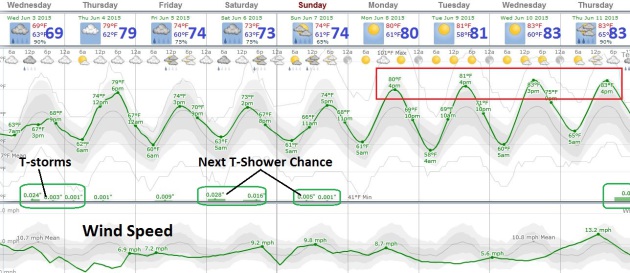

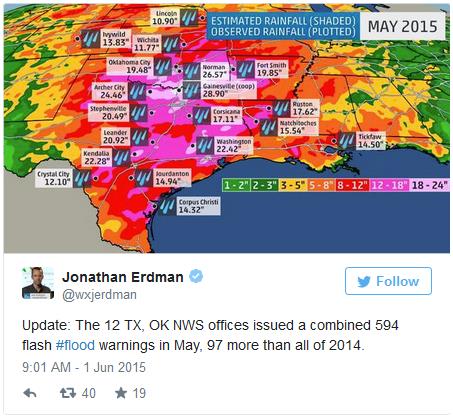
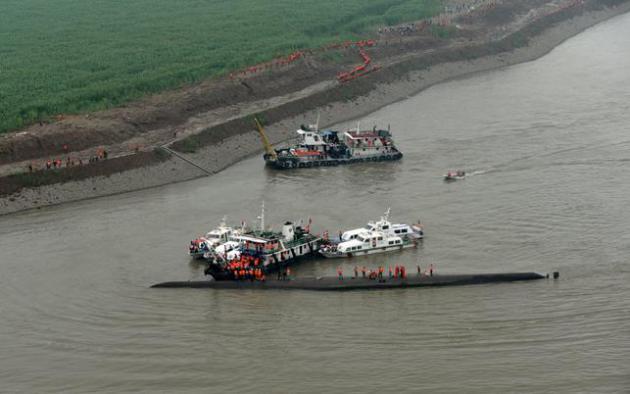

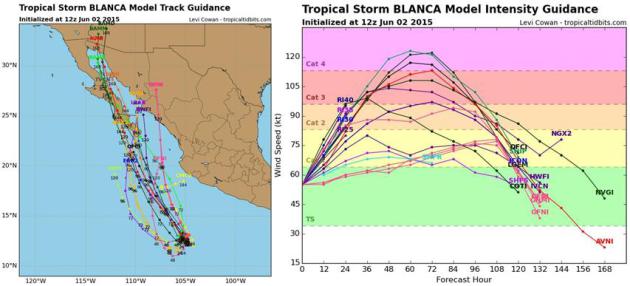




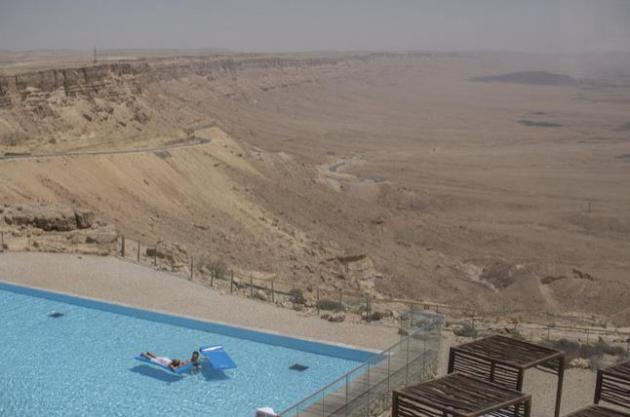

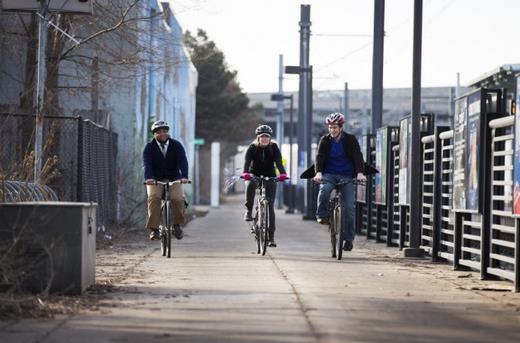

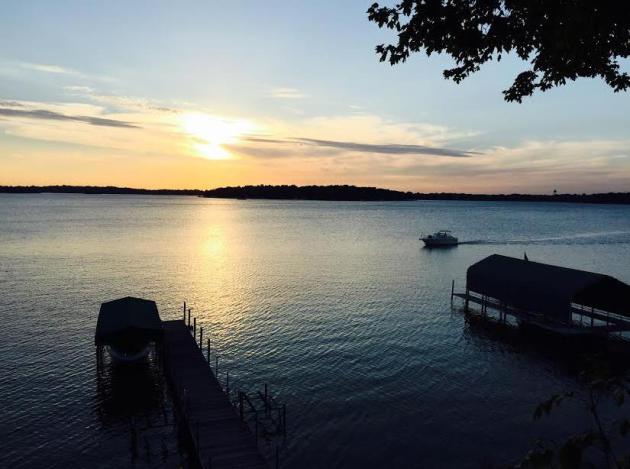





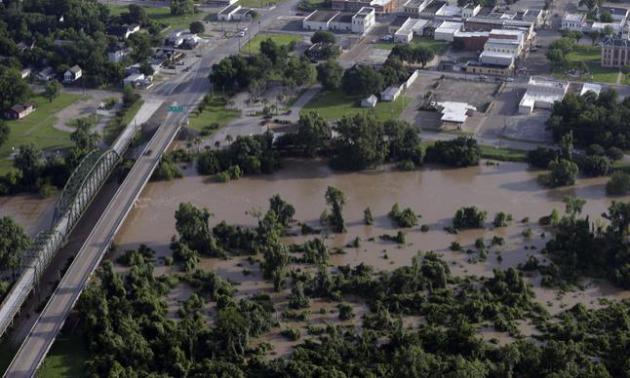



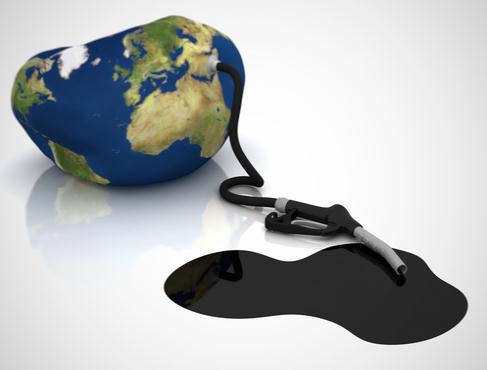

No comments:
Post a Comment